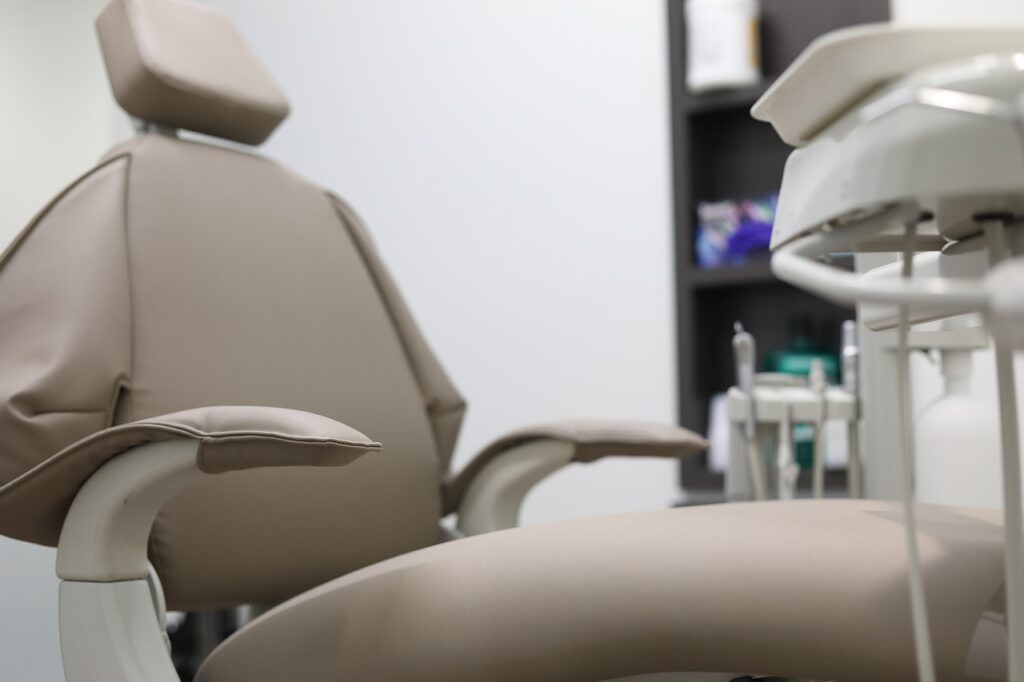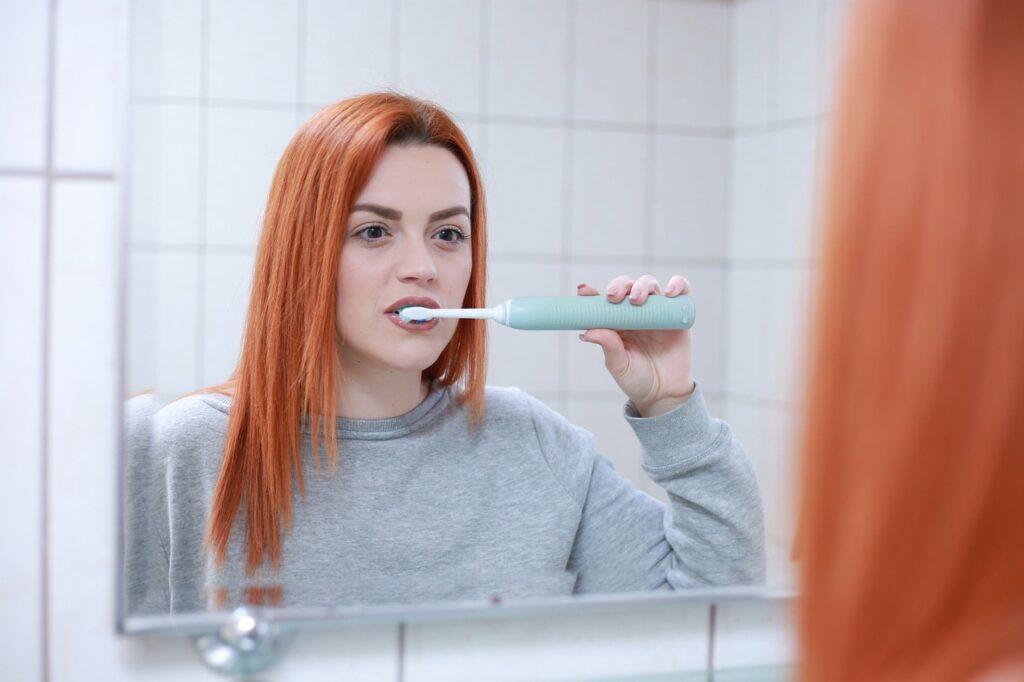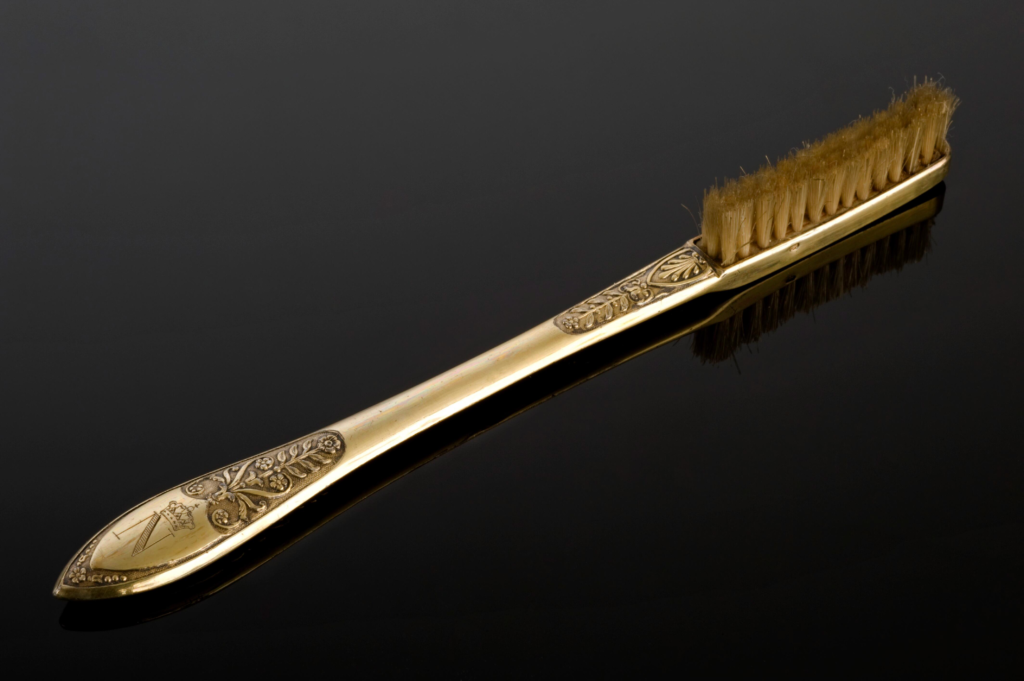
Willy L Neil
Electric Toothbrush
- They Say
Dental hygienists have a habit of waiting until you are paralyzed by an anesthetic and slurping on a saliva sucker to berate your dental routine. Invariably they bestow us with expert advise and in those moments I often wonder whether they are marketing a sponsored product or genuinely sharing useful techniques. Seems as though each decade advances a new modus operandi for dental hygiene. Somewhere between silicon toothpicks, hi-tech toothbrushes, tongue scrapers, and water flossers, surely there are helpful innovations. For those reliably proven ineffective, can we let go? Let’s begin with the electric toothbrush.
I realize what I have to say about this matter will not bode well with Proctor & Gamble or Colgate-Palmolive, but they can rest assured, no one cares about my thoughts. Few care to think much at all, certainly not about the way they brush their teeth. Polite society bombards us with enough stress the instant we open our eyes and begin scrolling through our virtual brains allowing the blue illumination of our black mirrors to burn a hole through our retinas, the windows of our souls, but I digress.
Perhaps an auto shut-off switch flips in our prefrontal cortex as we slump into that cushy reclining dental chair, tilted into a submissive posture, like a doggy with his belly exposed. There will be no belly rub. There will be agony inflicted by an otherwise tender-hearted technician. After having your teeth scraped, drilled, and sandblasted, with the occasional metallic zing on an exposed nerve despite the fire stabs of needles your sensitive papilla endured to shield you from punishing razor-sharp electrical waves of pain shooting through your spine, you may be inclined to purchase anything promising to make your visits, as the hygienist puts it, “easier.”

You may be willing to divest yourself of $329.99 for the Philips Sonicare Diamond Clean or $149.99 for an Oral-B Pro with Bluetooth. If you are unwilling to shell out that kind of hard-earned dough, you may choose the Daily Essence Sonic Rechargeable for $39.99. On the low end, battery powered options such as the Colgate 360 cost $9.00. You may not factor in the added expense of batteries or replacement heads, or the cost of replacing it every three to five years, but at this point, who’s counting?
The expense seems nominal considering annually the average adult in the U.S. spends around five-hundred dollars on dental services[1]. Bearing in mind the multitude of health problems associated with poor oral care such as endocarditis, cardiovascular disease, pregnancy complications and pneumonia[2], investing a little extra on an electric toothbrush seems like a small price to pay for enhanced dental protection. Better safe than sorry right?
Many are choosing to be more sorry than safe. Approximately twenty percent of middle-aged Americans do not receive needed dental care due to cost[3]. The expense of filling a cavity may not be an option for those struggling to fill the bellies of their children. Affording the rent may be a higher priority to some than paying for thirteen-thousand-dollar dental implants[4]. Yet, despite sacrificing essential dental work, nearly half of the U.S. population own an electric toothbrush[5], proving many of us are uncompromising regarding this device. Meanwhile, corporations are not at all sorry, benefiting handsomely from our anticipatory anxiety[6] to the tune of a $33.7 billion oral care market, which is expected to continue growing at a compounded annual rate of 6.4% until 2030[7].

Sixty years ago, few could have imagined the massive success of the electric toothbrush. In 1954, Dr. Phillippe-G Woog introduced the first commercial electric toothbrush in Europe[8]. ‘Broxodent’ was primarily designed as a medical device, but it would require talented Mad Men to persuade the average dexterous person of its usefulness in America. Public perception of the Swiss contraption was met with skepticism as expressed in the 1964 issue of The Atlantic deriding the electric toothbrush as lazy, messy, and even dangerous.[9] Today, electric toothbrushes corner nearly ten percent of the oral care industry at a whopping $3.29 billion[10] with the United States leading the market[11].
Bewildering enthusiasm for products that consistently fail to meet expectations in study[12] after peer-reviewed study[13][14]. Scientists have shown that powered toothbrushes, in all their iterations[15], are hardly living up to the promises of manufacturers and proponents. One could surmise that increased implementation of the electric toothbrush would result in a corresponding decrease in periodontal disease, but that is not the case. Periodontal market data shows that gum disease is actually quite high and, on the rise[16]. The CDC found that 47% of Americans over thirty and 70.1% of the geriatric population suffer from periodontal disease. The CDC also reported that among adults, two survey periods in the early 2000’s showed the ‘overall prevalence of caries decreased slightly’ and there were no detectable changes among several demographics[17].
Studies showing a favorable analysis of the electric toothbrush usually declare their bias, such as sponsorship by a major corporation[18] which utilize their findings in brand messaging. Deceptive language is often incorporated when interpreting data from these clinical trials, creating an illusion of validity. For many consumers, the act of simply referencing a study is acceptable proof of marketing claims. Some may believe those claims are incontrovertible. Few of us deeply inquire. Like anything else, the devil is in the details.

In an article entitled “Manual vs electric toothbrush: which is better?”[19] Philips Sonicare boasts, “In fact, a Cochrane study[20] found[21] that after three months of use, electric toothbrush users experienced a 21% reduction in plaque and an 11% reduction in gum inflammation compared with manual toothbrush users.”
That sounds compelling, except for one thing. Exclusive of context, the message is a distortion of the scientific results. The frequently referenced study sponsored by Braun AG does not claim to have ‘found’ anything conclusive in its survey of fifty-six NIH and WHO clinical trials on mostly adults from 1964 to 2011. It does however claim the evidence used to support their research was of moderate quality, denoting further research is likely to have an impact on their findings. In fact, the key results section of this rather old and problematic analysis clearly states:
“The benefits of this for long‐term dental health are unclear.”
“We conclude that powered brushes reduce plaque accumulation and gingivitis but the clinical importance of these reductions cannot be assessed. More high quality long‐term studies are required to investigate the effectiveness of rotation oscillation brushes in the treatment and prevention of periodontitis.”
“Only three trials were able to be used in the sensitivity analysis for trials at low risk of bias. These trials were unable to demonstrate statistically significant differences between powered and manual toothbrushes…”
“There was considerable unexplained heterogeneity in the meta‐analyses for plaque and gingivitis for the primary analysis of powered toothbrushes versus manual brushes, and for the meta‐analyses of individual modes of action.”
For those of us clueless plebs, “considerable heterogeneity” is a 75% to 100% variability in the data that can “indicate differences in the intervention which may not be working in the same way every time it’s used”[22].
I would never suggest Philips Sonicare intentionally included misleading language in their translation of the Cochrane study, which subsequently is the only one cited. In fact, I personally find it commendable they included the hyperlink in the footnotes for those of us with the patience and curiosity to peruse.
It is also worth noting that the American Dental Association (ADA) seems to reject the findings of corporate funded studies such as the aforementioned favoring the electric toothbrush, publicly refuting their claims. In a short video included on their website, Dr. Richard Price says very plainly that unless you have trouble holding a toothbrush, manual and electric “do the same good job”[23]. This muted approval of the electric toothbrush is generous. After comparing the risks of manual vs electric, stark distinctions become evident.
A cursory attempt at researching the safety of electric toothbrushes can immediately lead one down the shadowy path of eyebrow raising safety hazards. Aside from the obvious slimy accumulation of germs on the device itself[24], instances of, albeit rare, punctures of the mouth and cheek[25] and the risks of exposure to electro-magnetic frequencies[26] are thoughtfully omitted from Sonicare ads. Notwithstanding the potential for mortal injury, powered toothbrushes are known to cause irreparable damage to the gums and enamel due to the repetitive oscillating motion and pressure[27]. By comparison, the manual toothbrush seems relatively free from risk, as long as the bristles are soft and gentle pressure is applied[28].

When the ancient Chinese began developing the prototype of the toothbrush by fastening animal hair to carved ivory or bamboo sticks[29], their inventions were suitable for royalty. The craftsmanship of this exotic bourgie instrument must have appeared divinely superior to chewing neem sticks. Eight-hundred years later, have we honestly advanced?
Synthetic materials replace the natural and along with that, the simple perfunctory action of brushing your teeth has become mechanized. If analysts are correct about the accelerated growth of the electric toothbrush market, technological Darwinism could eventually result in the extinction of manual altogether. At least for now, about half of America remains manual and perhaps a solid percentage of the global population stick with neem. That would be an epic rap battle. I’d bet on the neem team. At the very least, they leave a zero-carbon footprint, right WEF?
Though it would threaten to kill the bottom line of our corporate overlords, a chew stick vs toothbrush debate is not far-fetched. Across centuries, western civilization has vacillated over the usefulness of toothbrushes, powered or not. Eventually, the toothbrush became normalized.

In 1819, esteemed dental professor L.S. Parmly printed a favorable position in his Practical Guide to the Management of Teeth, recommending its usage as part of a daily routine, but alerted that friction from repetitive perpendicular motion applied ‘constantly’ is ‘highly injurious’ to the gums.[30] Prescient as well as practical, Parmly echoes the results of prevailing clinical trials.
For those who care, perfectly practical Parmly also cautioned that brushing alone cannot adequately prevent dental caries or the loss of teeth:
“…both brushes and dentifrices, as they are at present used, however ingeniously contrived or often employed, are insufficient for the purposes of effectual cleansing, is obvious from this circumstance, that the teeth and gums are still left in a diseased state[31].”
To effectively clean the mouth, Parmly preferred the use of table salt and waxed dental floss in addition to brushing. Furthermore, professor Parmly rebuked the use of toothpicks because they poke pesky pockets trapping food particles leading to pestering pestilences and tooth decay.
Ultimately, eating habits[32], and according to the CDC (for what it’s worth,) drinking fluoridated water[33], use of dental sealant[34], and genetics[35] are key to oral health. It is evident that cultures incorporating wholesome nutritional practices tend to keep their teeth regardless of accessibility to electric toothbrushes.
It is also critical to keep the toothbrush fresh and sanitary. Poor maintenance, worn bristles and bad technique will severely diminish results[36]. Nevertheless, manual or electric, it’s probably a good idea to replace the toothbrush before you feel plastic rub against enamel.
If you are in a pinch and are low on replacement heads, hopefully you saved your reward from the last torture session. That soft-bristle relic included in every dental doggy bag could come in handy.
[1] https://www.statista.com/statistics/187230/consumer-price-index-physician-and-dental-services-in-us-since-1960/
[2] https://www.mayoclinic.org/healthy-lifestyle/adult-health/in-depth/dental/art-20047475
[3] https://www.statista.com/statistics/188067/persons-who-were-denied-dental-services-in-the-us-due-to-cost-by-age/
[4] https://health.costhelper.com/dentistry.html
[5] https://www.electricteeth.com/dental-statistics/
[6] https://www.psychologytoday.com/us/blog/science-choice/202003/7-reasons-panic-buying-behavior
[7] https://www.grandviewresearch.com/industry-analysis/oral-care-market
[8] https://www.electricteeth.com/the-history-of-the-electric-toothbrush/
[9] https://cdn.theatlantic.com/media/archives/1964/05/213-5/132611833.pdf
[10] https://finance.yahoo.com/news/4-billion-worldwide-electric-toothbrush-110000275.html
[11] https://www.researchandmarkets.com/reports/5649320/electric-toothbrush-global-market-report-2022?utm_code=dtgplx&utm_exec=jamu273prd
[12] https://doi.org/10.1186/s12903-019-0790-9
[13] https://pubmed.ncbi.nlm.nih.gov/29398859/
[14] https://doi.org/10.1186/s12903-019-0790-9
[15] https://www.mdpi.com/1660-4601/17/13/4649
[16] https://www.futuremarketinsights.com/reports/periodontal-market
[17] https://www.cdc.gov/oralhealth/publications/OHSR-2019-summary.html
[18] https://onlinelibrary.wiley.com/doi/full/10.1111/idh.12401
[19] https://www.usa.philips.com/c-e/pe/oral-healthcare-articles/everyday-routines/manual-vs-electric-toothbrush-which-is-better.html
[20] https://www.cochranelibrary.com/cdsr/doi/10.1002/14651858.CD002281.pub3/full
[21] https://www.merriam-webster.com/dictionary/found
[22] https://s4be.cochrane.org/blog/2018/11/29/what-is-heterogeneity/
[23] https://www.mouthhealthy.org/dental-care-concerns/is-electric-toothbrush-better
[24] https://www.dollarshaveclub.com/content/story/whats-weird-gunk-base-electric-toothbrush
[25] https://news.yahoo.com/fda-toothbrush-may-destroy-163733614.html
[26] https://honestemf.com/electric-toothbrushes-emf/
[27] https://www.shermanoaksdentistry.com/is-your-electric-toothbrush-damaging-your-teeth/
[28] https://www.ncbi.nlm.nih.gov/pmc/articles/PMC5319671/
[29] https://www.history.com/news/who-invented-the-toothbrush
[30] https://archive.org/details/2566032R.nlm.nih.gov/page/n131/mode/2up
[31] https://archive.org/details/2566032R.nlm.nih.gov/page/n123/mode/2up
[32] https://www.ada.org/resources/research/science-and-research-institute/oral-health-topics/nutrition-and-oral-health
[33] https://www.cdc.gov/fluoridation/index.html
[34] https://www.cdc.gov/oralhealth/dental_sealant_program/index.htm
[35] https://www.cdc.gov/oralhealth/infographics/severe-tooth-loss.html
[36] https://onlinelibrary.wiley.com/doi/abs/10.1111/idh.12370
